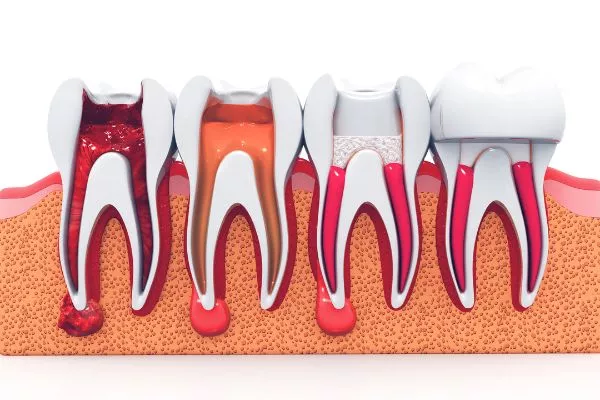How a Cavity Turns Into a Root Canal –  Tooth decay is nothing but bacteria piled up in the mouth for a long time. The acids are detrimental to the enamel, referred to as caries by dentists. But it’s generally referred to as cavities. Any part of the tooth – biting surface, sides, and root – can be affected. The effect on the teeth root that comes about root cavities.
Tooth decay is nothing but bacteria piled up in the mouth for a long time. The acids are detrimental to the enamel, referred to as caries by dentists. But it’s generally referred to as cavities. Any part of the tooth – biting surface, sides, and root – can be affected. The effect on the teeth root that comes about root cavities.
What causes tooth decay?
Generally, cavities result from prolonged tooth decay which later accounts for cavities. The process may take time from a sticky substance called plaque caused by excess leftover sugar and starches. These leftovers block the tooth functionality when plaque is formed. Plaque later becomes tartar, and the acid contained in the plaque begins to rot the enamel surface. The rottenness forms holes in the enamel; the holes continue to widen to the tooth’s dentin layer. If the case gets complicated, the situation shifts to the middle part of the tooth, attacking the nerves.
The end part of the dental formation tends to experience this decay the most. This vulnerability is because the teeth are not well-taken care of. Tooth decay research proved that the situation happens faster than cavities on other parts of the teeth surface, including the enamel. That makes decay harder to treat since the end part is hardly visible.
From tooth cavity to tooth canal
The tooth has the enamel, which is the upper layer, the dentin, which is the middle layer, and the nerve tissue, seen as the innermost layer. You can easily resolve decay on the enamel and dentin with a dental filling to enable optimal teeth function. But, a prolonged cavity can extend to the nerve tissue in the deepest part of the tooth. These issues are averted with root canal for teeth formation and function.
When is it time for a tooth canal?
- When you experience these symptoms, it’s time for a tooth canal.
- Toothache
- Tooth irritation or sensitivity
- Swelling on the gums
- Colorless tooth
- Sensitive pain on cold or hot foods
How to prevent root cavities
Prevention should be the first thing to do. But how do we prevent root canals? We can start with regular brushing, flossing, and dental visitation. We can further take food for teeth growth, a diet with no acid, fewer starches, and sugar. These simple steps can prevent tooth canals.
Furthermore, we can use toothpaste that contains fluoride. The chemical is for teeth cleansing and is very effective for tooth decay and activities. The observation was supported by a systematic research review in 2020, which shows that daily use of fluoride, either applied by a professional or individual, can help prevent root cavities. Brushing with the toothpaste should be done twice a day after eating or drinking for maximum result.
We won’t have a root canal if we maintain good oral hygiene daily. Daily brushing and flossing should be easy, and the dentist doesn’t bite for those scared of dental appointments. Regular dental attention and teeth cleaning should be done twice a year, and the result will be amazing.
Contact Fountain Valley Dental – Dental Services in Molalla
MORE TIPS FOR DENTAL PATIENTS:
- What Are Porcelain Veneers?
- Do I Need Sedation for Dental Work?
- What is Oral Conscious Sedation?
- Can Everyone Use Invisalign?
- When to Fix a Tooth and When to Pull it
- How Professional Differs from OTC
- How Safe is Teeth Whitening?
- What is Sedation Dentistry?
- When Do I Need a Root Canal?
- Affiliate: Encompass Health in Humble for Neurological Rehabilitation